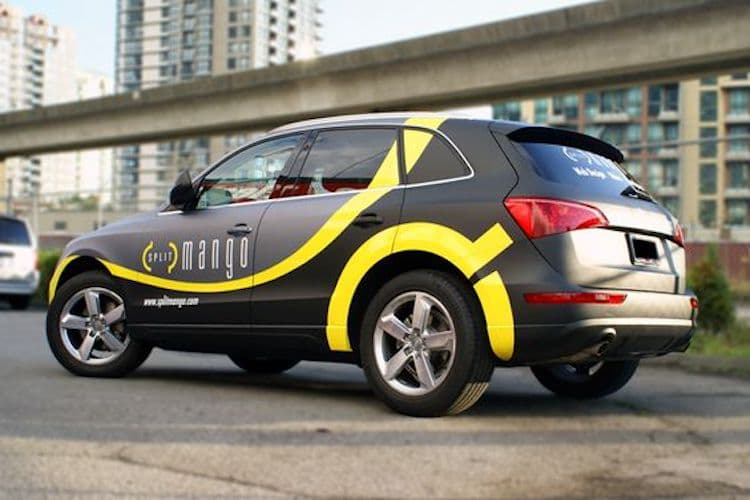Car branding is a powerful force that shapes how consumers perceive vehicles, making it a cornerstone of the automotive industry. Over the years, automotive branding has evolved from simple logos and basic advertisements to a complex system that conveys a car’s identity, performance, heritage, and even lifestyle. From the early days of the automobile to today’s tech-driven world, the journey of car branding has mirrored the changes in consumer expectations, technological advancements, and marketing strategies. In this article, we explore the evolution of car branding from its origins to the modern-day, highlighting key milestones that have shaped how car brands connect with their audience.
The Birth of Car Branding: 1900s to 1940s
The roots of car branding date back to the early 20th century, a time when the automotive industry was just beginning to take shape. In the 1900s, automobiles were a luxury item for the wealthy, and branding was more about distinguishing one carmaker from another rather than appealing to a mass market.The early examples of car branding were simple logos or visual markers, and the focus was mainly on quality and craftsmanship. One of the first recognizable car brands to emerge was Ford, with its iconic blue oval logo. Ford’s branding, introduced in 1903, was one of the earliest instances of a brand symbolizing both reliability and innovation. Henry Ford’s mass production techniques made cars more affordable, but the branding was still quite simple, focusing on the name of the company and the value of practicality.
Post-War Expansion: 1950s to 1970s
After World War II, the automotive market expanded dramatically, driven by economic growth and consumer demand for personal vehicles. During this period, car branding began to evolve more seriously as companies realized the power of creating distinct identities to appeal to different segments of consumers.This period also saw the growth of international brands. Volkswagen rose to prominence with its iconic Beetle, which, thanks to its distinctive shape and mass appeal, became a symbol of individuality and counterculture in the 1960s. The brand’s advertising campaigns, including the famous “Think Small” campaign, focused on the Beetle’s practicality, simplicity, and affordability, reflecting the shift in consumer behavior towards more economical and sustainable choices.
The Age of Globalization: 1980s to Early 2000s
The 1980s and 1990s marked the era of globalized branding in the automotive industry. As car manufacturers expanded into international markets, their branding strategies had to adapt to diverse cultures, consumer preferences, and values. The power of branding became even more apparent as automakers sought to create strong emotional connections with consumers across different regions.Japanese car brands such as Toyota, Honda, and Nissan started to gain significant traction during this period. Brands that were initially known for their economy and reliability began shifting their image to incorporate design and innovation. Toyota, for example, introduced the Lexus brand in 1989, aiming to compete with the luxury market traditionally dominated by European automakers like BMW and Mercedes-Benz. Lexus’s branding successfully conveyed luxury, performance, and cutting-edge technology, ultimately helping the brand become one of the most recognizable names in the high-end market.During this era, brands also began to develop unique taglines, jingles, and advertising slogans to make their cars more memorable. Television commercials, print ads, and later, digital campaigns became key to connecting with a global audience. Car brands no longer just sold vehicles—they sold an experience, a lifestyle, and an identity that consumers could buy into.
The Digital Revolution and the Rise of Sustainability: 2000s to Present
The 2000s saw car branding enter the digital age, with the rise of online marketing, social media, and a growing emphasis on environmental sustainability. As the internet transformed how consumers research and purchase cars, brands began to shift their marketing strategies to appeal to a new generation of tech-savvy consumers.At the same time, environmental concerns began to shape the direction of automotive branding. Tesla, founded in 2003, became one of the most disruptive forces in the automotive industry by emphasizing electric vehicles (EVs) as not just an environmentally friendly alternative, but as a status symbol. The sleek and minimalist design of Tesla cars, combined with their branding as cutting-edge and sustainable, made Tesla the face of the future of automotive technology. Elon Musk’s personal brand also contributed to Tesla’s powerful narrative of innovation and disruption.
The Future of Car Branding: Toward a Digital, Autonomous, and Sustainable Era
As we move further into the 21st century, the future of car branding will be influenced by several emerging trends, including automation, connectivity, and sustainability. As autonomous vehicles become a reality, car branding will need to shift to emphasize not only driving experience but also technology, convenience, and safety.Furthermore, as younger generations—particularly Millennials and Gen Z—continue to emerge as a dominant consumer group, car brands will have to adapt to new expectations. These generations prioritize sustainability, transparency, and inclusivity, demanding that companies align with their values on environmental issues and social responsibility.Car brands will also have to adjust to the continued rise of digital technology, with a greater emphasis on data-driven marketing, virtual showrooms, and personalized experiences. The branding process will increasingly take place through digital touchpoints, with virtual reality, augmented reality, and online customization tools allowing consumers to interact with brands in new and exciting ways.
Conclusion
From its humble beginnings to the digital, tech-driven world of today, car branding has evolved to become a powerful tool for connecting consumers with vehicles that reflect their values, lifestyles, and aspirations. As the automotive industry continues to transform with new technologies and shifting consumer preferences, car brands must remain flexible, adapting their identities and strategies to stay relevant in an ever-changing market. The evolution of car branding is far from over—it’s just entering a new chapter, driven by innovation, sustainability, and a deeper connection with consumers than ever before.

